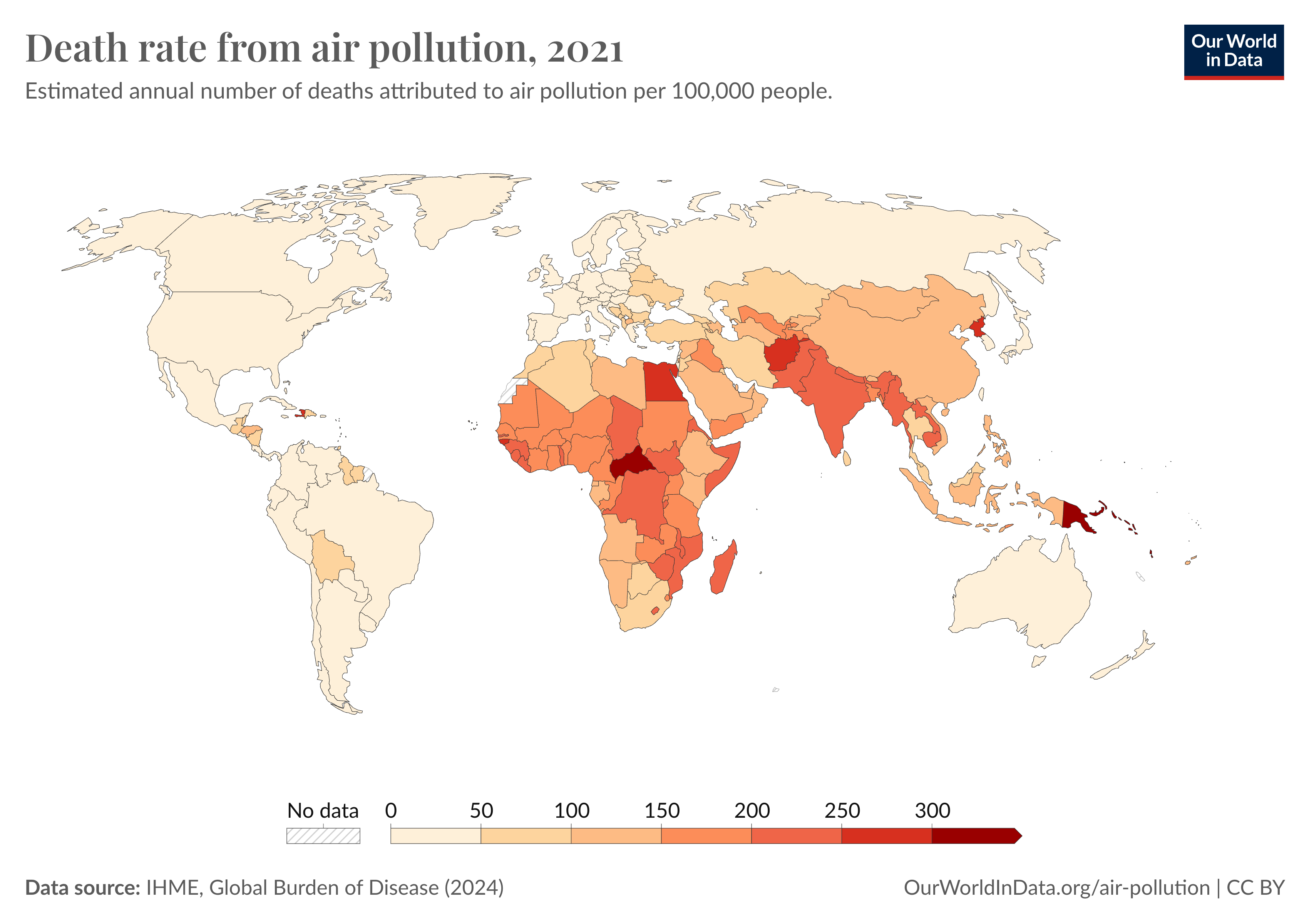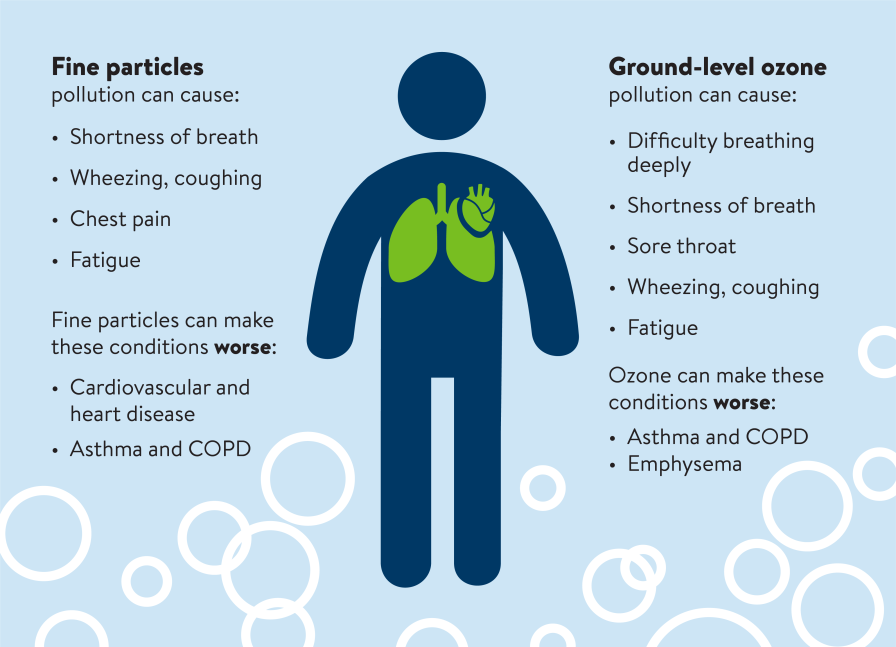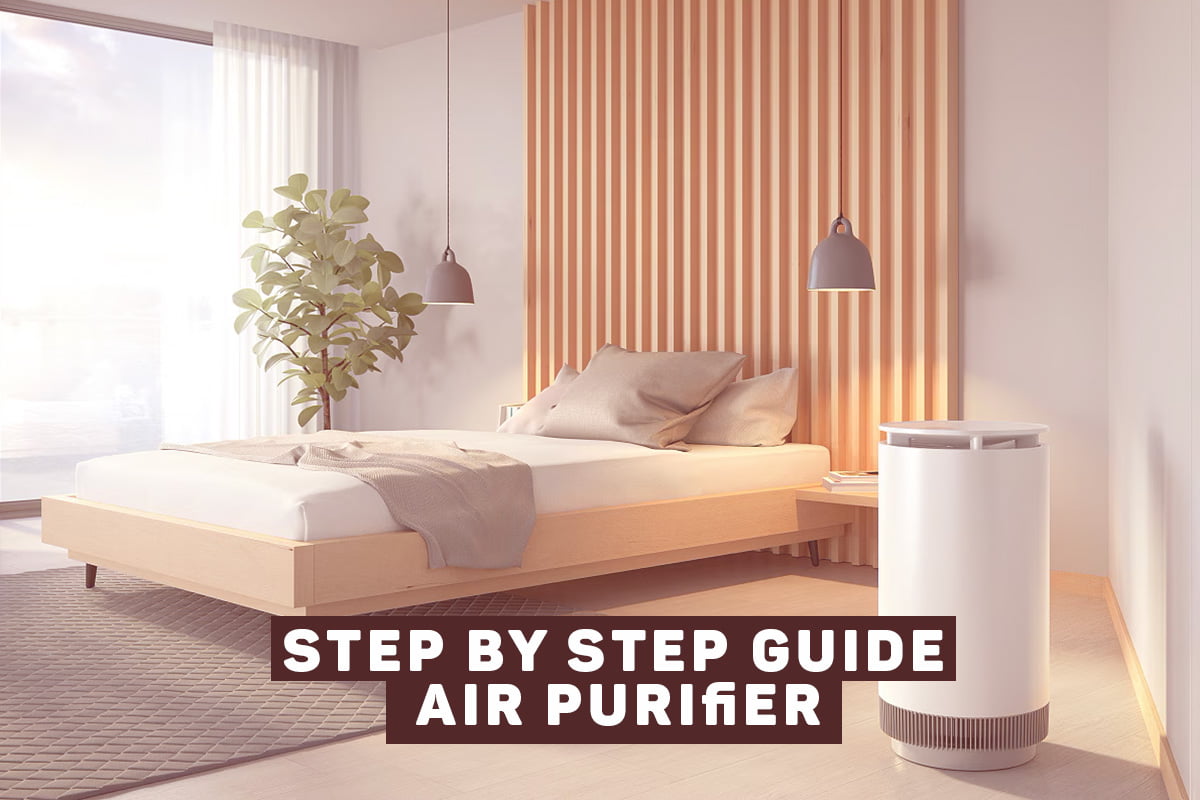1. What is an Air Purifier?
An air purifier is a device designed to clean the air in our home or offices by removing pollutants, allergens, and other harmful particles. It works by drawing in the surrounding air, filtering it through various layers, and then releasing the purified air back into the room. The primary goal of an air purifier is to improve indoor air quality, making it safer and healthier to breathe. In this post we will discuss in detail how air purifier works.
2. Why You Might Need One
You might not realise it, but the air inside our home can be more polluted than the air outside. Everyday activities like cooking, cleaning, and even just living indoors release particles like dust, pet dander, and volatile organic compounds (VOCs) into the air. These pollutants can aggravate allergies, cause respiratory problems, and even affect our sleep quality.
For instance, people living in cities or areas with high pollution levels often find relief from using an air purifier. One user shared their experience of living near a busy road: “I was constantly dealing with allergies, and the air always felt heavy. After using an air purifier, I noticed a significant difference. The air felt cleaner, and my allergy symptoms were much less severe.”
Table of Contents

3. How Does an Air Purifier Work
Step-by-Step Process how Air Purifier Works
Air Intake: The purifier pulls in air from the room.
Pre-Filter: The air first passes through a pre-filter, which captures larger particles like dust, hair, and pet dander.
Main Filter (HEPA or Activated Carbon): The pre-filtered air then moves through the main filter. A HEPA (High-Efficiency Particulate Air) filter captures tiny particles as small as 0.3 microns, including pollen, mold spores, and bacteria. If the purifier uses an activated carbon filter, it will absorb odors and gasses.
Additional Technologies (Optional): Some air purifiers may include UV light or ionizers that further disinfect the air by killing bacteria and viruses or trapping particles with charged ions.
Clean Air Release: The purified air is then released back into the room, free of harmful particles.
The Physics Behind Air Purification
Air purification relies on basic principles of physics. The HEPA filter, for example, uses a dense mat of fibers to trap particles. When air passes through, particles are captured by three mechanisms:
Interception: Particles stick to the fibers as they pass by.
Impaction: Larger particles collide with the fibers and get stuck.
Diffusion: Smaller particles are slowed down by the air molecules and are more likely to be trapped.
Activated carbon filters, on the other hand, use a process called adsorption. Odours and gasses are attracted to the surface of the carbon and stick to it, effectively removing them from the air.
Common Misconceptions
“Air Purifiers Make the Air Dry”: Air purifiers do not remove moisture from the air. Their sole purpose is to remove particles. If our air feels dry, it’s more likely due to our home’s humidity levels, not the purifier.
“Air Purifiers Eliminate All Pollutants”: While air purifiers are highly effective at reducing airborne pollutants, they can’t remove every type of contaminant. For example, they don’t clean surfaces, so dust and allergens can still settle on furniture and floors.

4. Benefits of Using an Air Purifier
Do Air Purifiers Help with Dust?
Yes, air purifiers are excellent at reducing dust in the air. By continuously cycling the air in a room through filters, they capture dust particles, preventing them from settling on surfaces. This means less frequent dusting and a cleaner living environment.
One person shared, “Before using an air purifier, I was dusting almost every day. Now, I only need to do it once a week, and I notice a lot less dust floating around.”
Health Benefits: Is It Healthy to Sleep with an Air Purifier?
Sleeping with an air purifier in our bedroom can significantly improve our sleep quality. Clean air reduces allergens like dust mites and pet dander that can disrupt our sleep by causing sneezing, coughing, or itchy eyes. It also ensures you’re breathing in fewer pollutants, leading to more restful and uninterrupted sleep.
For individuals with asthma or allergies, an air purifier can be a game-changer. One user mentioned, “I used to wake up in the middle of the night with a stuffy nose and itchy throat. Since using an air purifier, my nights are peaceful, and I wake up feeling refreshed.”
Improving Air Quality in the Bedroom
An air purifier in the bedroom doesn’t just improve our sleep; it enhances the overall air quality, making the room a healthier place to spend time. By removing pollutants, the air feels fresher and lighter, creating a more comfortable environment.
Do Air Purifiers Remove Smells?
Yes, air purifiers equipped with activated carbon filters are particularly effective at removing odours. Whether it’s cooking smells, pet odours, or even smoke, these filters absorb the molecules responsible for bad smells, leaving the air smelling fresh and clean.
One person noted, “I live in an apartment with a small kitchen, and cooking smells used to linger for hours. With an air purifier, those odours are gone much faster.”
How Air Purifiers Improve Overall Home Environment
Beyond the bedroom, placing air purifiers in common areas can improve the overall air quality throughout our home. They help reduce allergens, eliminate odours, and create a cleaner, healthier environment for our family.

5. Types of Air Purifiers
When it comes to choosing an air purifier, there are several types on the market, each using different technologies to clean the air. Understanding the differences can help you select the best one for our needs.
Best Air Purifiers on the Market
- HEPA Air Purifiers: High-Efficiency Particulate Air (HEPA) filters are widely regarded as the gold standard for air purification. They are incredibly effective at capturing particles as small as 0.3 microns, which include dust, pollen, mold spores, and pet dander. Popular models include the Dyson Pure Cool and the Honeywell HPA300.
- Activated Carbon Air Purifiers: These purifiers are excellent at removing odours, gases, and chemicals from the air. They use a filter made of activated carbon, which has a large surface area for absorbing pollutants. The Levoit Core 300 and the Molekule Air are well-known examples that also combine HEPA and carbon filtration for broader protection.
- UV-C Air Purifiers: UV-C light is used in some purifiers to kill bacteria, viruses, and other microorganisms. These purifiers often work in tandem with other filtration methods to provide comprehensive air cleaning. The GermGuardian AC4825 is a popular model that combines HEPA filtration with UV-C light.
- Ionic Air Purifiers: These purifiers release negative ions that attach to airborne particles, causing them to settle out of the air. While they can reduce airborne particles, they may produce ozone as a byproduct, which can be harmful at high levels. The Winix 5500-2 is a model that uses PlasmaWave technology, which is a safer alternative to traditional ionisers.
Different Technologies: HEPA, Activated Carbon, UV, etc.
- HEPA Filters: These filters work by trapping particles in a dense mat of fibers. They are best for people with allergies, asthma, or anyone looking to remove dust, pollen, and other small particles from the air.
- Activated Carbon Filters: Ideal for removing odours, smoke, and chemicals from the air. They work by adsorbing pollutants onto the surface of the carbon. These filters are great for kitchens, homes with pets, or areas with strong smells.
- UV-C Light: UV-C purifiers are effective at killing bacteria and viruses by destroying their DNA. They are often used in hospitals and are a good choice for people concerned about germs and airborne illnesses.
- Ionic Technology: Ionic purifiers use charged ions to make particles stick together and fall out of the air. While they can reduce airborne particles, they are less effective than HEPA filters at removing allergens and may produce ozone.
Which One is Right for You?
Choosing the right air purifier depends on our specific needs:
- For Allergies and Asthma: A HEPA filter is our best bet, as it effectively captures pollen, dust, and pet dander.
- For Odour Removal: Look for a purifier with an activated carbon filter to eliminate smells and chemical fumes.
- For Germs and Bacteria: Consider a purifier with UV-C light technology to reduce airborne pathogens.
- For General Use: A combination of HEPA and activated carbon filters will provide the broadest protection for our home.
6. Air Purifiers: Are They Worth the Money?
Air purifiers can be a significant investment, so it’s natural to wonder if they’re worth the cost. Here’s a closer look at the advantages, disadvantages, and overall value of air purifiers.
Advantages and Disadvantages
Advantages:
- Improved Air Quality: Air purifiers can significantly reduce the number of pollutants in our home, leading to better respiratory health, especially for those with allergies or asthma.
- Odor Removal: Activated carbon filters are effective at removing unpleasant odours, making our home smell fresher.
- Allergen Reduction: By trapping allergens like pollen, dust, and pet dander, air purifiers can help alleviate symptoms for allergy sufferers.
- Peace of Mind: Knowing that the air in our home is being cleaned can provide peace of mind, especially in urban areas with high pollution levels.
Disadvantages:
- Initial Cost: High-quality air purifiers can be expensive, with some models costing several hundred dollars.
- Maintenance Costs: Filters need to be replaced regularly, adding to the ongoing cost of owning an air purifier.
- Noise Levels: Some air purifiers can be noisy, especially at higher fan speeds, which might be bothersome in quiet environments like bedrooms.
- Limited Coverage: Air purifiers are typically designed for single rooms, meaning you may need to buy multiple units to cover our entire home.
Do Air Purifiers Make a Difference?
Yes, air purifiers do make a noticeable difference, particularly in homes with high levels of indoor pollutants. People with allergies, asthma, or sensitivities to smoke, pet dander, or chemical fumes often find significant relief with the use of an air purifier.
One user shared, “Before getting an air purifier, I was constantly sneezing and dealing with itchy eyes. After using it for just a few days, I noticed a big improvement. My symptoms have decreased, and the air feels much cleaner.”
Are Air Purifiers Worth Buying?
Whether an air purifier is worth buying depends on our specific needs and environment. If you or someone in our home suffers from allergies, asthma, or respiratory issues, the benefits of an air purifier can far outweigh the costs. Similarly, if you live in a high-pollution area or have pets, an air purifier can help maintain a cleaner, healthier living space.
7. Practical Tips for Using Air Purifiers
To get the most out of our air purifier, it’s important to know how to use it effectively. Here are some practical tips on placement, operation, and maintenance.
Where to place air purifier?
Placement is key to maximizing the effectiveness of our air purifier. Here’s where to put it:
- Bedrooms: Place the air purifier near our bed or the room’s main air flow to ensure you breathe cleaner air while you sleep.
- Living Rooms: Position the purifier near the center of the room or close to sources of pollution, like windows or doors.
- Kitchens: If odours or cooking fumes are a concern, place the purifier in the kitchen to quickly clear the air after meals.
- Near Pollutant Sources: If you have pets, consider placing the purifier near their sleeping area or where they spend the most time.
Ensure that the air purifier has enough space around it (at least a few feet) to allow for proper air circulation.
How Long Should You Run an Air Purifier?
For the best results, run our air purifier continuously. Most air purifiers are designed to run 24/7, providing consistent air cleaning. However, if you prefer to run it only during certain times, consider these guidelines:
- At Night: Running the purifier while you sleep ensures you breathe clean air throughout the night.
- During High Pollution Times: If you live in an area with heavy traffic or industrial activity, run the purifier during peak pollution hours.
Most air purifiers have different speed settings. You can use a higher speed when pollution levels are high and a lower speed for quieter operation during sleep.
Can You Use an Air Purifier with Windows Open?
While it’s possible to use an air purifier with windows open, it’s not recommended if you want to achieve optimal air quality. Open windows allow outdoor pollutants to enter, making it harder for the air purifier to keep up. If you need fresh air, consider opening windows for short periods and closing them while the air purifier is running.
How Do You Know If You Need an Air Purifier?
Here are some signs that you might benefit from an air purifier:
- Allergy or Asthma Symptoms: Frequent sneezing, coughing, or respiratory irritation could indicate that our indoor air quality is poor.
- Persistent Odours: If our home often smells of cooking, smoke, or pets, an air purifier can help.
- Visible Dust or Pet Hair: If you notice a lot of dust or pet hair accumulating quickly, an air purifier can help reduce these particles in the air.
- Living in a High-Pollution Area: Urban areas or regions with heavy traffic and industrial activity often have higher levels of airborne pollutants, making an air purifier beneficial.
8. How to Clean an Air Purifier Filter
i. Determine the Type of Filter
Before cleaning, identify the type of filter your air purifier uses. The most common types are:
- Pre-Filters: Usually made of foam or mesh, designed to capture larger particles like dust and pet hair.
- HEPA Filters: High-efficiency filters that capture tiny particles. These are usually not washable.
- Activated Carbon Filters: Absorb odours and gases. They are generally not washable, but some may be refreshed by exposure to sunlight.
- Permanent or Reusable Filters: Some filters are designed to be washable and reusable.
ii. Turn Off and Unplug the Air Purifier
For safety, always turn off and unplug the air purifier before attempting to clean the filter.
iii. Remove the Filter
Open the air purifier’s housing according to the manufacturer’s instructions and carefully remove the filter. Make sure to handle the filter gently to avoid damaging it.
iv. Cleaning the Pre-Filter
- Vacuuming: If the pre-filter is not washable, use a vacuum cleaner with a brush attachment to gently remove dust and debris.
- Washing: If the pre-filter is washable, rinse it under lukewarm water. Avoid using soap unless specified by the manufacturer. Gently scrub it with a soft brush if necessary.
- Drying: Let the pre-filter air dry completely before reinstalling it. Do not use heat or direct sunlight, as this could damage the material.
v. Cleaning the HEPA Filter
- Vacuuming Only: Most HEPA filters are not washable. Instead, lightly vacuum the surface of the filter using a vacuum with a soft brush attachment. Do not apply too much pressure, as this could damage the delicate fibers.
- Replacement: If the filter is too dirty or clogged, it may need to be replaced rather than cleaned. Always follow the manufacturer’s guidelines on filter replacement.
vi. Cleaning the Activated Carbon Filter
- Refreshing (if applicable): Some carbon filters can be refreshed by placing them in direct sunlight for a few hours. This can help release trapped odours.
- Replacement: Like HEPA filters, many carbon filters are not washable and need to be replaced when saturated with odours or pollutants.
vii. Reassemble the Air Purifier
Once all parts are cleaned and completely dry, reassemble the air purifier by placing the filters back in their correct positions. Ensure everything is securely in place before turning the unit back on.
vii. Regular Maintenance
- Check Frequency: Check the filters regularly, typically once a month, to ensure they are not clogged with dust or debris.
- Follow Manufacturer’s Instructions: Always refer to your air purifier’s manual for specific cleaning and maintenance instructions, as different models may have unique requirements.
By regularly cleaning or replacing the filters in your air purifier, you’ll ensure it operates efficiently, providing you with clean, healthy air in your home.
9. Addressing Common Concerns
Air purifiers are effective devices, but they can also raise some concerns or questions among users. Here are answers to some of the most common concerns:
Do Air Purifiers Use a Lot of Electricity?
Air purifiers are generally energy-efficient, but their electricity usage can vary depending on the model and how often you run it. Most modern air purifiers use about the same amount of electricity as a small fan, ranging from 30 to 100 watts on average. If you run our purifier 24/7, it might add a few dollars to our monthly electricity bill, but the benefits of clean air often outweigh this minor increase in energy costs.
For instance, some energy-efficient models, like those with Energy Star certification, are designed to operate continuously with minimal power consumption. If energy usage is a concern, look for air purifiers that are specifically designed to be power-efficient.
Do Air Purifiers Make the Air Dry?
No, air purifiers do not dry out the air. Their primary function is to remove pollutants, not to alter humidity levels. If our air feels dry, especially during winter months, it’s likely due to low humidity, not our air purifier. In such cases, a humidifier might be needed to add moisture back into the air.
If you’re concerned about dry air, you can use a hygrometer to monitor indoor humidity levels. Ideally, indoor humidity should be between 30% and 50% for comfort and health.
Why Does My Air Purifier Make My Room Smell Weird?
If our air purifier is emitting an unpleasant smell, there could be a few reasons:
- Dirty Filters: Over time, filters can become clogged with trapped pollutants, which might start to smell. It’s important to change or clean our filters regularly according to the manufacturer’s instructions.
- New Air Purifier Smell: Some air purifiers might have a slight plastic or chemical odour when first used. This is usually temporary and should dissipate after running the purifier for a few hours.
- Ozone: If our purifier uses ionisation or UV-C light, it might produce a small amount of ozone, which has a distinctive smell. While most purifiers keep ozone levels low, some people are more sensitive to its odour.
If our purifier continues to smell bad, consider checking the filters and ensuring they’re properly maintained. If the smell persists, it might be worth contacting the manufacturer for advice or a possible replacement.
Will an Air Purifier Remove Pet Smells?
Yes, air purifiers can be effective at reducing pet odours, especially those with activated carbon filters. These filters absorb odour-causing molecules, helping to eliminate smells from pets like dogs or cats. However, keep in mind that while an air purifier can significantly reduce pet odours in the air, it won’t remove smells that are embedded in carpets, furniture, or other surfaces.
For best results, combine the use of an air purifier with regular cleaning, such as vacuuming pet hair and washing pet bedding. This helps tackle the source of the odour and keeps our home smelling fresh.
What Should I Do If My Air Purifier Isn’t Working Properly?
If our air purifier isn’t working as expected, here are a few steps you can take:
- Check the Filters: Ensure that the filters are clean and installed correctly. Dirty or improperly installed filters can reduce the purifier’s efficiency.
- Review the Manual: Go through the user manual to troubleshoot any specific issues related to our model. This could include checking for blockages, ensuring proper airflow, or resetting the unit.
- Inspect for Damage: Look for any visible signs of damage to the unit, such as cracks or loose components, which might affect its performance.
- Contact Customer Support: If you’ve tried all the basic troubleshooting steps and the purifier still isn’t working, reach out to the manufacturer’s customer support. They can provide further assistance or guide you through the process of repairing or replacing the unit.
Conclusion
Final Thoughts: Is an Air Purifier Right for You?
Air purifiers are valuable tools for improving indoor air quality, especially in homes with pets, smokers, or allergy sufferers. They help reduce pollutants like dust, pollen, pet dander, and odours, creating a cleaner and healthier living environment. However, they are not a one-size-fits-all solution. The decision to buy an air purifier depends on our specific needs, such as the size of our space, the level of pollution in our area, and any health concerns you might have.
If you find ourself frequently dealing with allergies, asthma, or persistent odours, an air purifier could be a worthwhile investment. Similarly, if you live in a city with high pollution levels or have pets, an air purifier can help maintain a fresher, more comfortable home.
Key Takeaways
- Air Purifiers Improve Air Quality: They effectively remove pollutants like dust, pollen, and odors, which can enhance our overall health and comfort.
- Different Types for Different Needs: Choose an air purifier based on our specific needs, whether it’s for allergens, odors, or germs.
- Energy-Efficient: Most air purifiers are energy-efficient, and running them continuously won’t significantly increase our electricity bill.
- Maintenance is Key: Regularly cleaning or replacing filters is crucial to maintaining the efficiency of our air purifier.
- Worth the Investment: If you have specific health concerns or live in a polluted area, an air purifier can be a valuable addition to our home.

